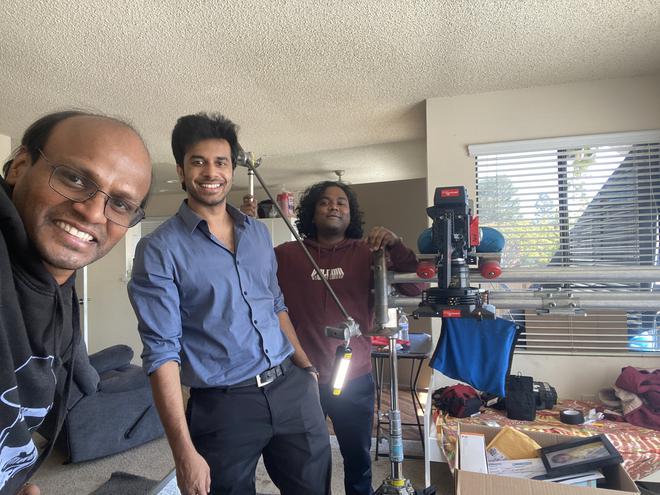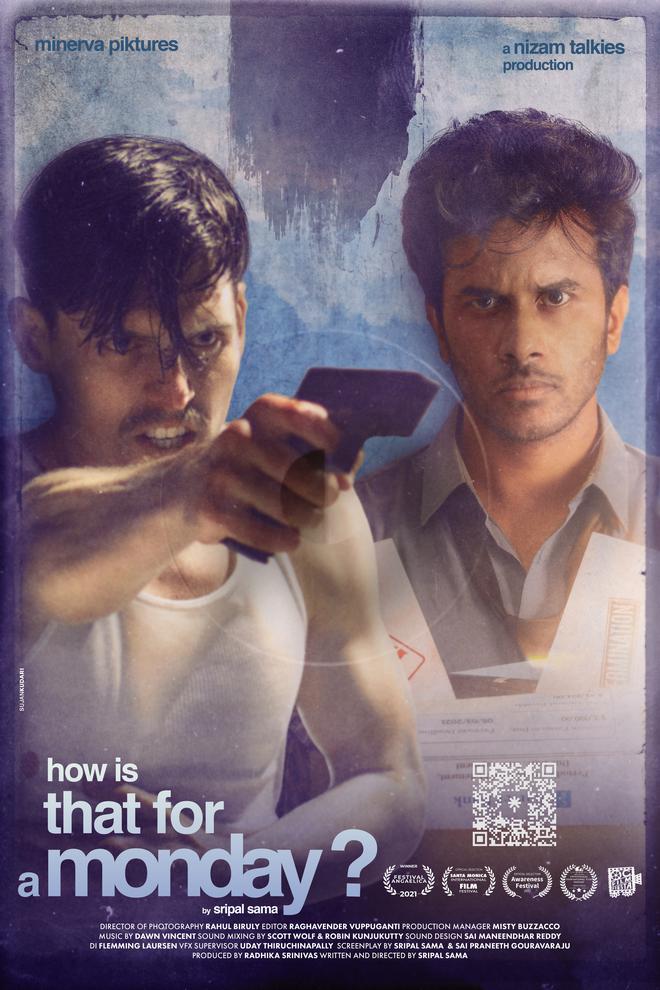The English-Telugu indie film How is That for a Monday? written, directed and produced by Sripal Sama, is a product of lockdown. The Hyderabad-bred, USA-based filmmaker had intended to make a feature film with a storyline involving elements of dance and gymnastics with actor Kaushik Ghantasala. However, lockdown changed the course of things and months later, the two collaborated for How is That for a Monday?, which releases in select multiplexes in India and the US on October 27. The genre-shifting film follows events on a fateful Monday that changes the lives of an immigrant techie, a billionaire, a bunch of amateur thieves and an elderly man. The story touches upon identity, racism, police brutality and class differences.
“The pandemic and post-pandemic phase was crazy, to say the least,” Sripal reflects. “One day the stock market would crash, and the next day it reaches new heights. One day people lose jobs, the next day they get record salaries. We all stay home and the next day we gather in huge crowds to protest against injustice — the George Floyd incident, for instance. The urge to reflect on this, within a low budget ($68,000/ ₹54 lakh), inspired me to write this story.”

How is That for a Monday? takes place in Santa Ana in Orange County, Los Angeles, southern California, and has a multicultural cast led by Kaushik. The film has also been screened at select international film festivals including the Santa Monica International Film Festival and the 19th Chennai International Film Festival.
Kaushik, who featured as Satya Dev’s friend in Brochevarevarura, recalls the phase when Sripal had contacted him for another film. “I gave an online audition; once I was selected, I took up dance and gymnastic classes that were required to play my part. That story had to be put on hold due to the pandemic. Sripal then began writing this story (along with Sai Praneeth Gouravaraju). He told me that he wanted to cast someone based in the US to bring down the cost of travel. I loved the script, but I understood his situation and was happy to be a sounding board.”
Kaushik was also familiar with life and work in the US. He had worked briefly in the US, during which he took up short courses in acting and filmmaking from the University of Washington, Seattle. “I was the only Indian in a multicultural class. The exposure was great. Later, I trained at Adishakti Theatre, Pondicherry. All this helped me hone my skills and I was waiting for a good opportunity.”
The opportunity presented itself when Sripal wasn’t happy with other auditions for the principal techie immigrant character and eventually approached Kaushik. Soon, Kaushik was on a flight to the US. This was in March 2021.
For the next few weeks they filmed in Orange County. The crew size was as small as three people on some days and up to 16 on other days, explains Sripal. “On average, we had six to eight people on set. It was partly pandemic-induced and partly due to budget constraints. We embraced the restrictions by doing rigorous planning and chose a narrative style that fits these restrictions.”
Sripal’s apartment became the location for the house of the protagonist, Shyam (Kaushik). They rented houses for two other locations, used the rooftops of Santa Ana, requested the owner of a pawn shop to let them use the premises for a brief time, and at other times took a guerrilla approach.

Sripal had to cut several positions in the direction and production departments such as first assistant director, script supervisor and associate producer and took on those tasks himself. “I had to think of production logistics while also being creative and protecting the story as a director. It was overwhelming at times.” He had attended film school and had made a few short films. But this time there were newer things to learn on the go, such as distribution and theatrical release. “In India, chains like PVR allow producers to work directly with them, but it is a challenge in the US. Unless an established distributor backs us or the movie has established stars, we are at the mercy of theatre chains.”
Prior to setting up his production house Nizam Talkies, Sripal’s journey began like that of several Telugu filmmakers, from computer science engineering and an IT job to a film school. When an opportunity came up to go to the US for work, he took it up so that he could also join a film school. The day job as an IT engineer gave him the financial freedom to produce short films.
The interest in cinema, he recalls, grew when he moved from Warangal to Hyderabad for engineering. “The sudden transition to Hyderabad was overwhelming. I couldn’t take the hour-long bus rides to college and the hustle bustle of a big city. As a distraction, I fell back on movies, which eventually became an interest in filmmaking.”
While Sripal is awaiting audience reactions for his debut feature film, he has three stories in the works — one set in Hyderabad, one in the US and the other partly in India and the US. He also hopes to make full-fledged Telugu films.







